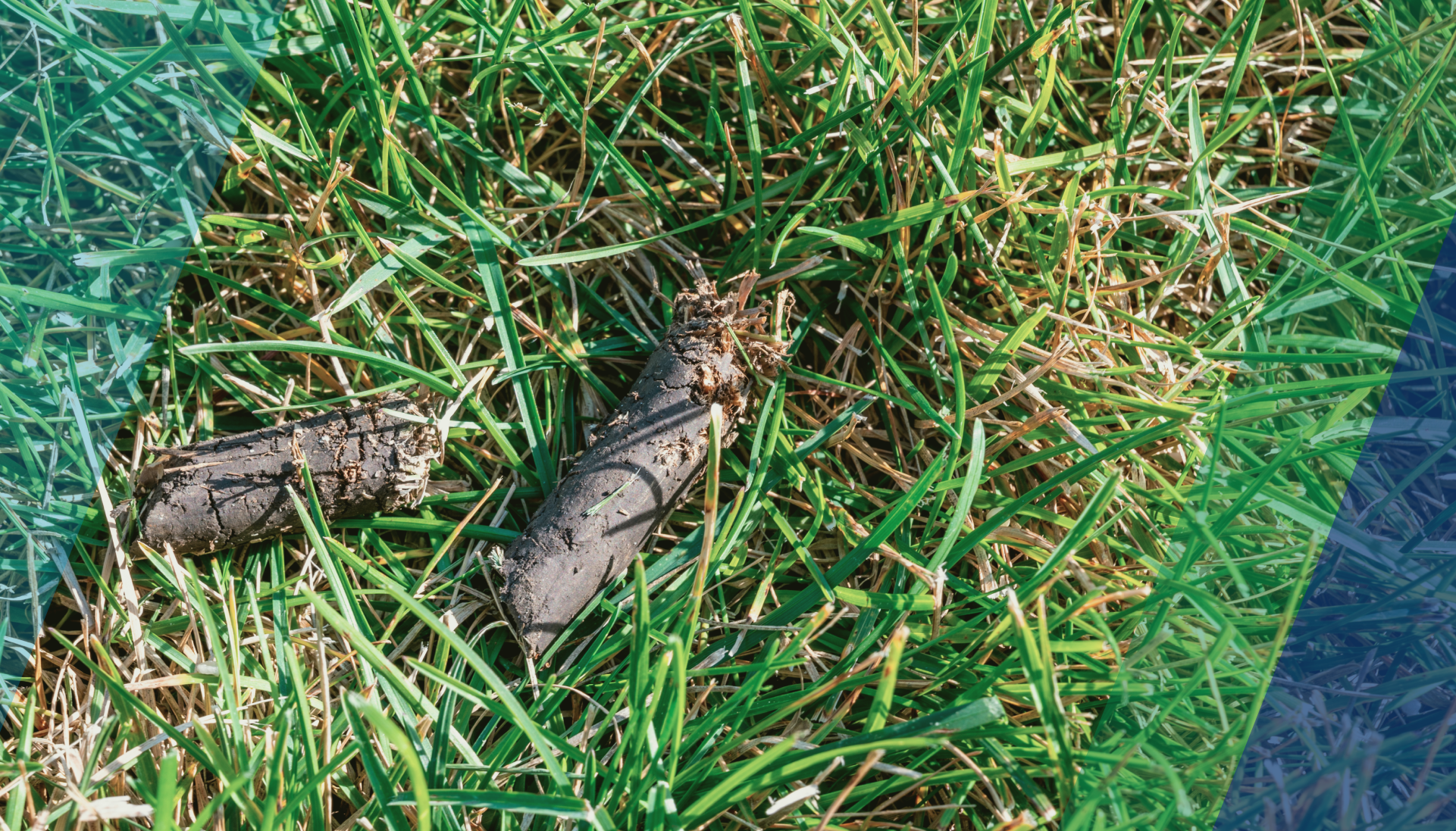
SERVICES
AERATION & OVERSEEDING
Improve the overall health and look of your lawn with our selection of lawn services. Promote deep, healthy grass roots with a core aeration, or revive thin, damaged areas and promote new grass growth with overseeding.
Core Aeration
Core aeration is a cultural practice that should be done at least once each season to promote a good healthy lawn.
Heavily compacted soils and lawns with excessive thatch buildup may require additional more frequent aerations. The best time to have your lawn aerated is during Spring or Fall when the lawn is actively growing. Core aeration is the process of mechanically removing small cores of thatch and soil from the lawn using an aeration machine. The machine is designed to penetrate the soil and remove small cores about 2-3” in depth. This process leaves cores on the surface of the lawn and as these cores dry, they slowly work their way back into the lawn and provide critical nutrients and microorganisms to the soil.
The benefits of core aeration include:
Reduces soil compaction
Promotes deep, healthy grass roots
Removes excessive thatch layers (additional benefit of helping to control chinch bugs)
Reduces weed infestations
Reduces insect and disease incidence
Improves soil water uptake
Enhanced heat and drought stress tolerance
Improves fertilizer uptake
Reduces water runoff and puddling
Stimulates new grass growth
Broadcast
Overseeding
Broadcast overseeding is the planting of grass seed directly into an existing lawn, without tearing up the lawn, or soil. Overtime, grass gets old and needs to be replaced. Worn-out lawns invite weeds.
Overseeding is a great way to revive lawns that are thin, weak and have minor areas of concern. It’s an easy way to fill in bare spots, improve the thickness of your lawn, establish improved grass varieties and enhance your lawn’s health and colour.
Overseeding is recommended annually for every lawn, even the best conditioned lawns.
Overseeding introduces new endophyte-enhanced grass varieties into an older lawn and can help it better withstand insects, disease, drought, shady conditions and heavy traffic. Overseeding helps to reduce the amount of fertilizer and water and discourages weed infestations.
The best time to overseed your lawn is in the fall when the soil temperature is still warm which is necessary for seed germination and the air temperature is cooler which is better for grass growth.
There are fewer weeds for new grass to compete against and since your trees are starting to shed their leaves, there is plenty of sunlight. Also, diseases that attack seedlings are less active. Rain amounts and soil moisture is generally better in the fall. With fall germination, the young grass will have a couple of months to become established before temperatures drop too low and growth stops. Next spring, the young grass will have a few months to develop deeper roots before the summer heat sets in. If you are unable to overseed in the fall, your next best time is the spring.
Water is essential when seeding a lawn and without it, the seed cannot germinate. Maintaining a light frequent watering schedule multiple times a day until the grass fully establishes is vital to ensure the seed stays moist and does not dry out and die.
Depending on the grass species, it can take weeks or months to fully establish new seedlings. It is important to follow the after-care instructions provided by your lawn technician.
Core aeration is recommended when purchasing broadcast overseeding. Aerating a lawn prior to overseeding provides areas for seed-to-soil contact to support seed germination.

Machine Slit Seeding
Over time, grass gets old and needs to be replaced. Worn-out lawns invite weeds. It is important to revive lawns that are thin, weak and have minor areas of concern.
Slit Seeding is the best method for overseeding established lawns. It’s an easy way to fill in bare spots, improve the thickness of your lawn, establish improved grass varieties and enhance your lawn’s health and colour.
Slit Seeding machines have verticutting blades that cut through the thatch layer and open up rows of shallow miniature furrows in the soil.
The seed is embedded into these furrows which provide seed-to-soil contact where it can germinate. More seed-to-soil contact means a higher germination rate and a thicker better looking new turf.
The best time to slit seed your lawn is in the fall when the soil temperature is still warm which is necessary for seed germination and the air temperature is cooler which is better for grass growth. If you are unable to overseed in the fall, your next best time is the spring.
Water is essential when seeding a lawn and without it, the seed cannot germinate. Maintaining a light frequent watering schedule multiple times a day until the grass fully establishes is vital to ensure the seed stays moist and does not dry out and die.
Depending on the grass species, it can take weeks or months to fully establish new seedlings. It is important to follow the after-care instructions provided by your lawn technician.
Organic Compost
Top Dressing
All-natural, 100% weed-free organic topdressing rich in organic matter, plant essential nutrients and microorganisms that naturally enhances any soil type and promotes turf quality.
It aids to rejuvenate tired grass and improve poor soil conditions. By spreading a thin layer of pelletized topdressing on your lawn, this added organic matter provides a food source for increased microbial activity to improve the organic composition of your soil and reduce thatch. It enhances soil water-holding capacity resulting in increased heat and drought tolerance, enhances soil nutrient holding capacity maximizing plant nutrient uptake, and the humate contains natural plant hormones that enhance turf growth and deepens the colour of the grass.
Combine our compost top dressing with overseeding to really thicken up your lawn and to help reduce weeds.


